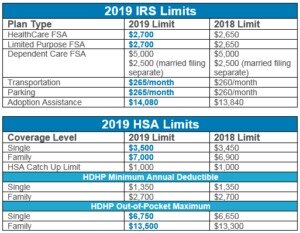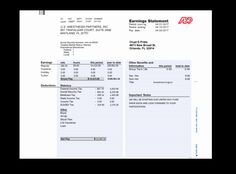
It simply reflects the net result of the total liquidation of assets to satisfy liabilities, an event that rarely actually occurs in the business world. It does not reflect additional accessible financing a company may have available, such as existing unused lines of credit. There are multiple ways to favorably alter the amount of net working capital. One option is to require customers to pay within a shorter period of time.
In other words, working capital is not just about survival—it’s also about the smooth sailing of day-to-day operations. It’s the financial fuel that powers the ongoing activities of a business, making it an essential barometer for short-term financial health and operational effectiveness. A current ratio of one or more indicates that the company can cover its obligations for the next year.
When a positive net working capital is derived, it means that a company has enough funds to take care of their current financial needs or obligations. Not just that, but a positive working capital also helps business owners forecast their future and make wise investment choices. Working capital is also a measure of a company’s operational efficiency and short-term financial health.
What is Net Working Capital (NWC): Meaning, Formula, Example & Ratio
As an example, a company with current assets of $130,000 and current liabilities of $100,000 has $30,000 of net working capital. This amount may be sufficient for some companies but inadequate for other companies. While they may sound the same, working capital and net working capital are two unique financial terms. Working capital represents your business’s assets and other financial resources.
2023 Preliminary Results, year ended 30 June 2023 Press release – Diageo
2023 Preliminary Results, year ended 30 June 2023 Press release.
Posted: Tue, 01 Aug 2023 06:05:07 GMT [source]
On that note, one other way to boost NWC is by selling long-term assets for cash. Of course, depending on long-term business goals, this may not be advisable. While calculating the NWC is important in determining the financial health of your business, there are some limitations to this calculation. An increase or decrease in NWC is useful for monitoring trends in liquidity from year to year or quarter to quarter over a period of time. To help you figure out your current liabilities, we included a calculator in our article on current liabilities.
A guide to raising capital as a small business founder
Managing current assets is similar to managing the fixed assets of your business. This is because you analyse the impact of current assets and fixed assets on the risk and return of your business. There are three important ways in which your current asset management differs from fixed assets management. In this article, you will learn about managing current assets that act as a source of short-term finance for your business.
This means the operating cycle would come to an end once you receive cash from your customers for the goods sold. This means your business would have to search for additional sources of finance to fund the increased current assets. This you can achieve by either taking additional debt, selling assets or shares, or increasing profits. As a business, your aim is to reduce an increase in the Net Working Capital.
Reasons to Choose a Line of Credit Over a Credit Card
Both figures can be found in the publicly disclosed financial statements for public companies, though this information may not be readily available for private companies. When a company’s assets are less than its total current liabilities, it may have trouble paying creditors. Ways to increase working capitalCompanies lacking in working capital can take steps to increase it by altering their invoice terms so that customers must remit payment within a shorter period of time. They can also work on extending their accounts payable terms so as to retain more cash on hand at any given point in time. Net working capital is a critical element for businesses since it provides an overall idea of the venture’s liquidity and whether it has enough capital to cover its short-term debts.
- For example, inventory is a liquid and current asset, but it can take a long time to sell inventory — it isn’t a reliable source of cash to pay off short-term debts.
- Alternatively, it could mean a company is failing to take advantage of low-interest or no-interest loans; instead of borrowing money at a low cost of capital, the company is burning its own resources.
- You need to answer this question considering serval attributes of working capital discussed above.
- Suppose a company has current assets of $2 million, which include cash, accounts receivable, and inventory.
NWC stands for “net working capital” and is a financial metric used to evaluate a company’s near-term liquidity risk. If inventory is a large part of your cash outflows, be sure to monitor those purchases carefully. Effective inventory management can have a big impact on the overall growth of your business. You want to have enough inventory to meet customer demand, but not so much that your bank account is emptied.
The Current Ratio
Current assets are any assets that a business can sell or consume within one year. Current assets include cash, accounts receivable, inventories of raw materials, and finished goods. In contrast, the current ratio includes all current assets, including assets that may not be easy to convert into cash, such as inventory. Working capital includes only current assets, which have a high degree of liquidity — they can be converted into cash relatively quickly. Fixed assets are not included in working capital because they are illiquid; that is, they cannot be easily converted to cash. Many businesses experience some seasonality in sales, selling more during some months than others, for example.
Adequate Net Working Capital ensures the long-term solvency of your business. This is because your business has a sufficient amount of funds to make regular and timely payments to creditors. In other words, you have the raw material required to manufacture goods without any delays. Furthermore, you collect accounts receivable on time and pay accounts payable when due.
Block Advisors can help you with all your small business needs from bookkeeping services and payroll to small business tax preparation. An increasingly higher ratio above two is not necessarily considered to be better. A substantially higher ratio can indicate that a company is not doing a good job of employing its assets to generate the maximum possible revenue.
- Net Working Capital Ratio refers to a ratio that includes all the components of your Net Working Capital.
- Ways to increase working capitalCompanies lacking in working capital can take steps to increase it by altering their invoice terms so that customers must remit payment within a shorter period of time.
- It’s important not to fall into the trap of constantly getting loans and selling equity.
- Understanding working capital as a small business owner can help you grow your business or take advantage of bigger opportunities.
For example, if you are sitting on $10,000 worth of excess inventory but you can sell it for $15,000 in cash, your current assets will increase by $5,000. Long-term assets such as equipment and machinery are not considered current assets. If your company has unused long-term assets like old equipment, consider selling them for cash if those assets are still in good condition. For example, refinancing short-term debt with long-term loans will increase a company’s net working capital.
Working capital is calculated by taking a company’s current assets and deducting current liabilities. For instance, if a company has current assets of $100,000 and employee turnover current liabilities of $80,000, then its working capital would be $20,000. Common examples of current assets include cash, accounts receivable, and inventory.
That is, you need to use discounting and compounding techniques in capital budgeting. However, such techniques do not play a significant role in managing your current assets. A company can also improve working capital by reducing its short-term debts. The company can avoid taking on debt when unnecessary or expensive, and the company can strive to get the best credit terms available. The company can be mindful of spending both externally to vendors and internally with what staff they have on hand. It might indicate that the business has too much inventory or is not investing its excess cash.

And of course, it’s important to note the qualitative differences between short-term assets and fixed, long-term assets. For example, payment from a large customer may be delayed significantly. For one, it can indicate a company’s potential to grow and invest and avoid bad trade debt.